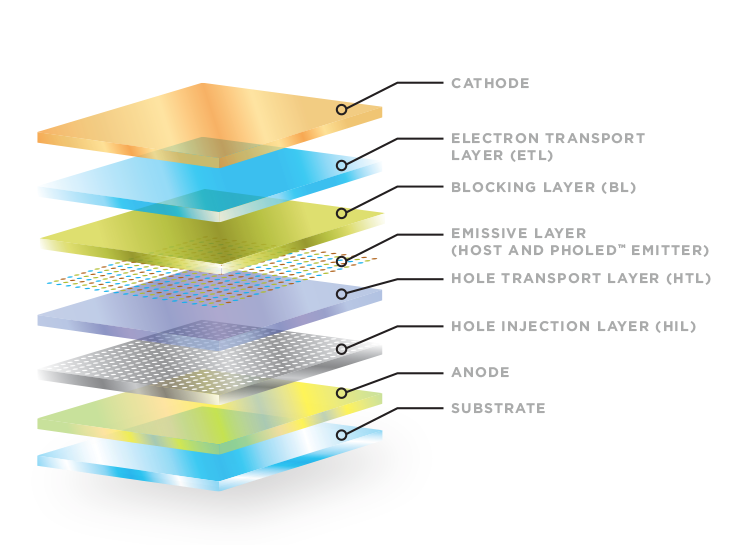OLED Technology: Understanding the Basics

OLED has revolutionized the display industry with its high color contrasts, wider viewing angles, and flexibility. But what exactly is OLED and how does it work? In this blog post, REPART Team will explore the basics of OLED technology, from its organic emitting materials to its unique structure.
What is OLED?
OLED (Organic Light Emitting Diode) is a display technology that uses organic compounds to emit light when an electric current is applied. Unlike traditional LCDs, which require a backlight to illuminate pixels, OLED displays emit light directly, resulting in vibrant colors, high contrast ratios, and wide viewing angles.
The organic compounds used in OLED screens are carbon-based and can be made to emit different colors by manipulating the thickness and arrangement of the layers. This allows for the creation of self-lit pixels that can be turned on and off individually, resulting in deep blacks and energy efficiency.
Understanding the Structure of an OLED Screen
OLED screens consist of several layers that work together to produce light and color. The basic structure of an OLED includes a substrate, an anode layer, an organic layer, a cathode layer, and a sealing layer. The anode layer is made of transparent material and is responsible for injecting holes into the organic layer. The organic layer contains the organic compounds that emit light when an electric current passes through them. The cathode layer consists of a material that injects electrons into the organic layer. The sealing layer protects the OLED structure from moisture and oxygen, ensuring its longevity.

By controlling the voltage across the anode and cathode layers, OLED displays can control the amount of light emitted by each pixel, resulting in vibrant colors and a wide range of contrasts. This structure allows for flexibility in design, as OLED displays can be made thin, light, and even flexible, opening up possibilities for various applications in smartphones, TVs, wearable devices, and more.
Working principles of OLED displays
OLED screens work on the principle of electroluminescence, where light is produced by the recombination of electrons and holes at the organic layer within the display. The organic layer consists of organic molecules or polymers that emit light when an electric current is passed through them.
In an OLED display, each pixel is made up of multiple layers: the anode (positive electrode), the organic layer, and the cathode (negative electrode). When a voltage is applied between the anode and the cathode, holes from the anode and electrons from the cathode move toward the organic layer.

The organic layer contains different types of organic molecules, each with its color emission. When the electrons and holes reach the organic layer, they recombine and release energy in the form of light. The color of the emitted light depends on the type of organic molecule used.
To display images, the OLED pixels are driven individually, with varying amounts of voltage applied to each pixel. By controlling the voltage, the intensity of each pixel can be adjusted, resulting in different levels of brightness.
The working principles of OLED displays enable them to deliver several advantages such as high contrast ratio, wide viewing angles, thin and lightweight designs, and energy efficiency. These features have made OLED displays widely used in various applications, including smartphones, TVs, wearable devices, and automotive displays.
Conclusion
OLED technology is a game-changer in the display industry. Its key advantages include a high contrast ratio, vibrant colors, wide viewing angles, and a thin and lightweight design. OLED displays have found applications in smartphones, TVs, wearable devices, automotive displays, and more.
With advancements in technology, OLED holds excellent potential for the future, with possibilities for foldable and rollable displays, improved energy efficiency, and even more innovative applications. OLED technology is poised to revolutionize the way we interact with digital screens and enhance the visual experience in various industries.
REPART is one of the leading OLED display manufacturers offering premium quality soft and hard OLED screens for iPhones, Androids, and other devices. Follow our blog for the latest news, guides, and tips regarding OLED and other display technologies.
-
Posted in
oled, oled display, oled screen, oled tech, oled technology




